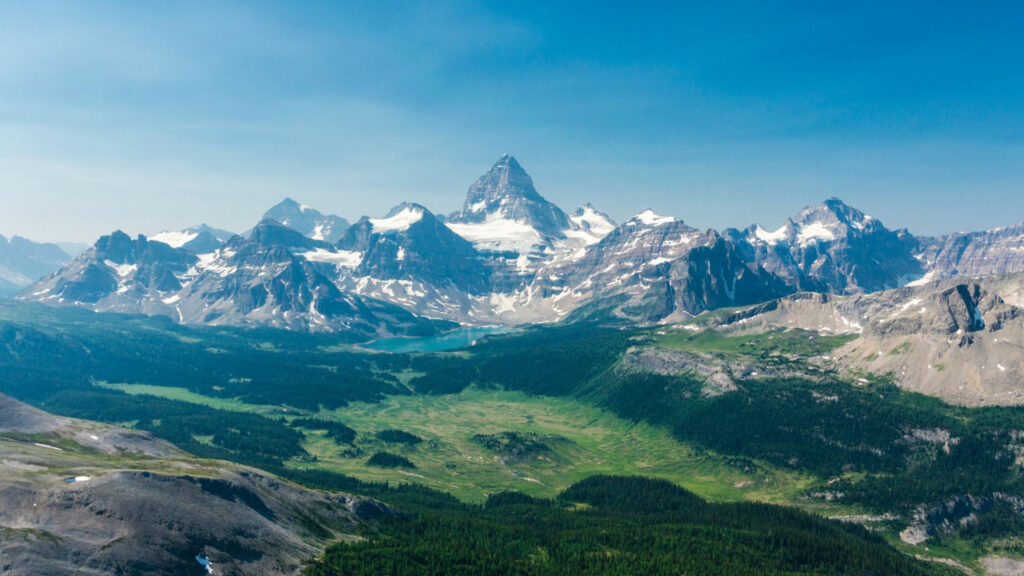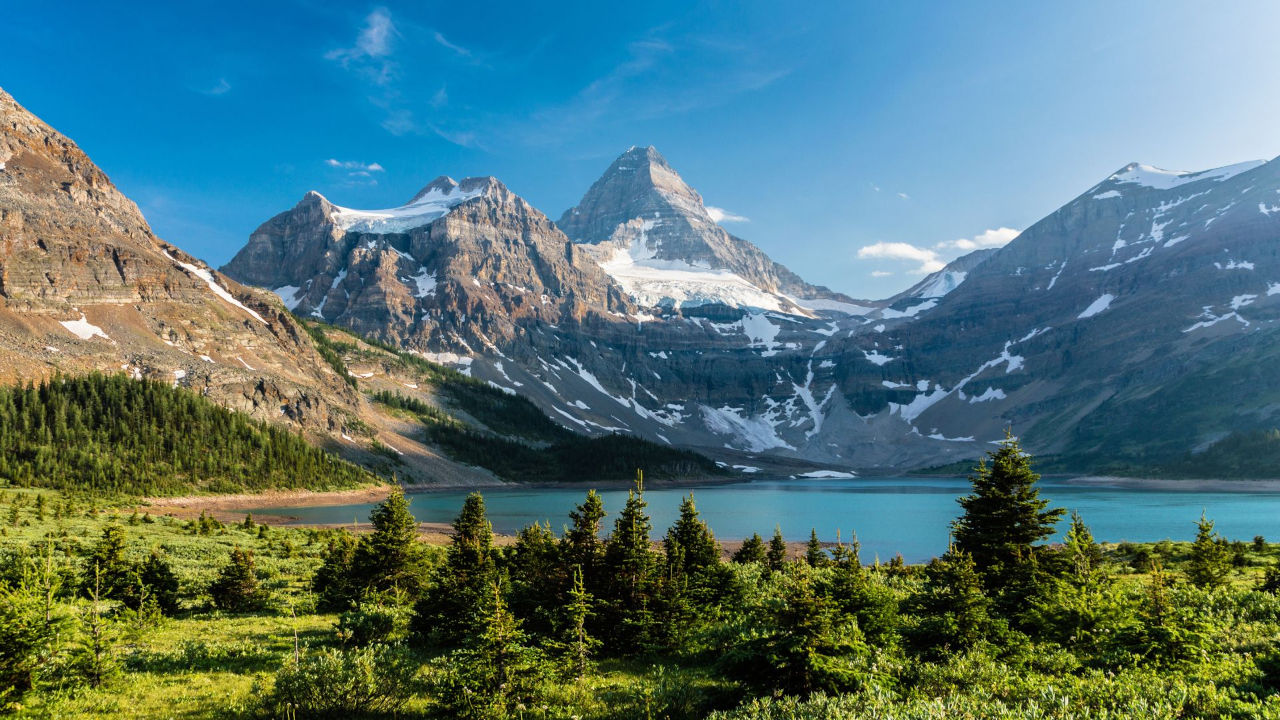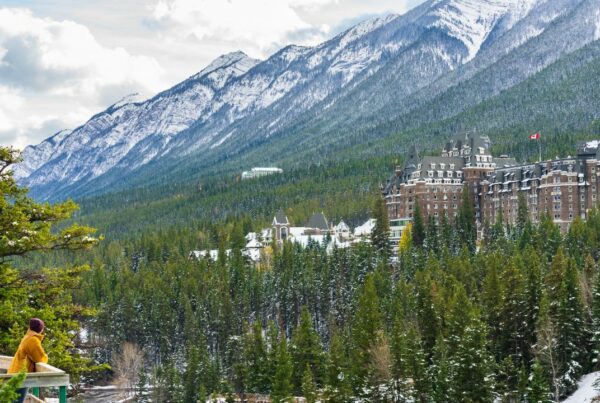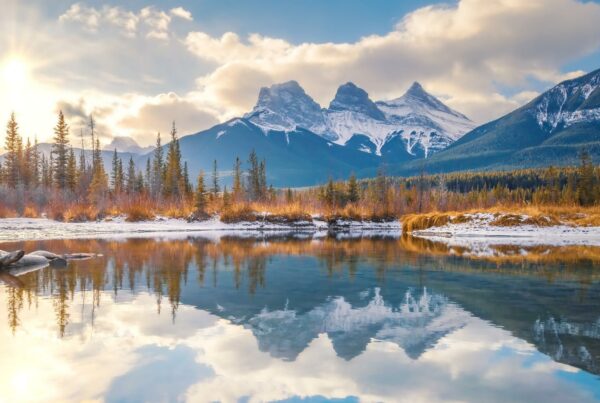Ever wondered about the indigenous origin of Mount Assiniboine’s name? Here’s the fascinating story of where it comes from.
Mount Assiniboine, at 11,870 feet (3,618 metres), is the tallest mountain in the southern region of the Canadian Rockies. It is often referred to as the “Matterhorn of the Rockies” for its distinctive pyramidal shape.
Mount Assiniboine (pronounced uh-SIN-uh-boin) was named by George Mercer Dawson who was a Canadian geologist and surveyor. He spotted it from Copper Mountain on the south side of the Bow Valley in 1885 and named it “Assiniboine” because on this day there was a plume of cloud around the summit, which reminded him of the smoke he had seen rise from the Assiniboine people’s tipis.
The name Assiniboine (it translates to “stone boiler”) was adopted by the English from French colonists. It was a transliteration into French phonetics of what they heard the Ojibwe use as a term for these people. The Ojibwe name is asinii-bwaan (Stone Sioux). In Cree, they are called asinîpwâta.

Today, the local Assiniboine tribes are known as the Îyârhe Nakoda, which means the people of the mountains. There are also Assiniboine tribes in Saskatchewan and Manitoba.
Most people are more familiar with Îyârhe Nakoda’s more commonly used name, which is the Stoney Nakoda. This name was used by early European explorers because they cooked their food by placing hot stones in water.
It is believed that the Îyârhe Nakoda split from the Oceti Sakowin (Sioux Confederacy) and lived in the Lake Superior region of present-day Minnesota and southwestern Ontario before being forced west due to war with Objiwe tribes around the year 1640.
The Nakoda joined their Woodland Cree neighbours in a military and trade alliance, which became known as the Iron Confederacy (Nehiyaw-Pwat). The Iron Confederacy gradually expanded westward waging wars against other Plains peoples – such as the Blackfoot, Ktunaxa, Shoshone, Hidatsa, Lakota and Gros Ventre – to protect and expand their lucrative commercial success.
If you’re wondering why Mount Assiniboine has this name rather than being called Assiniboine Mountain, it’s because of the traditional British naming convention, which goes like this:
If a mountain has “Mount” preceding its name then it indicates that it is named after a person (or sometimes a group of people as in this case). If the name is followed by “Mountain” then it’s typically named after a geographical feature.
- Chephren Lake And The Mistaya River Valley - July 1, 2024
- Mindfulness And The 4 Steps of Attention Restoration Theory - June 29, 2024
- 3 Pillars Of An Ecotourism Marketing Strategy For Selling Travel Experiences - June 29, 2024



